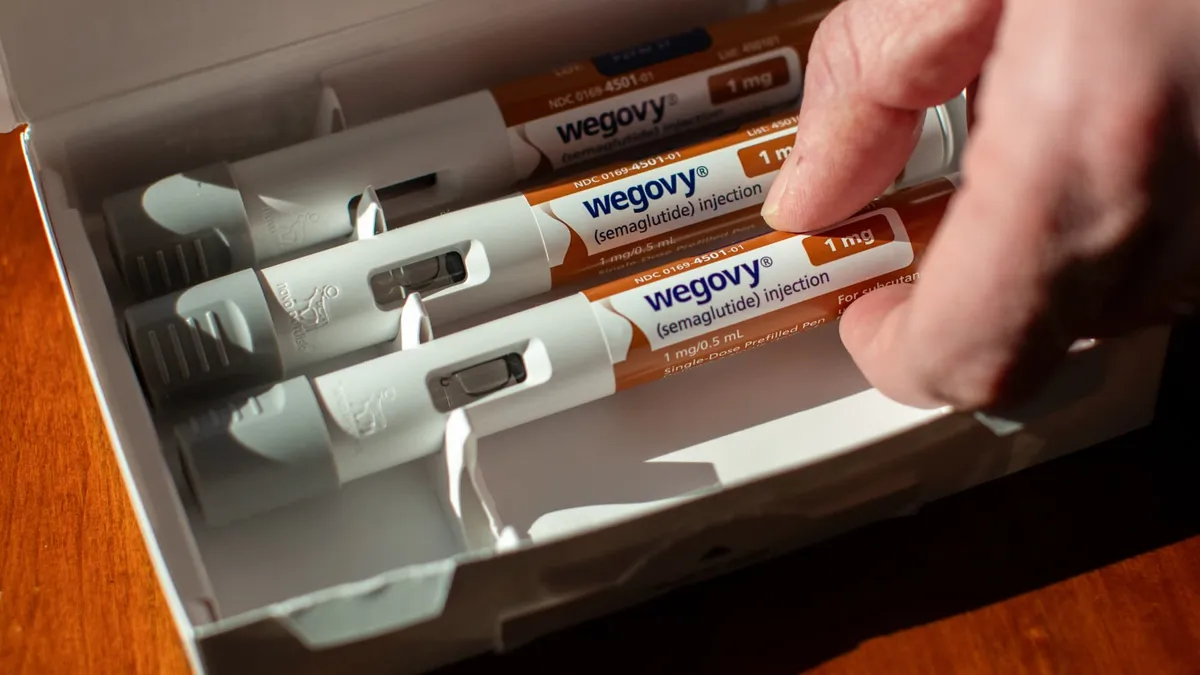
On Thursday, President Donald Trump announced significant agreements with pharmaceutical giants Eli Lilly and Novo Nordisk aimed at drastically reducing the prices of their leading weight loss medications. These groundbreaking deals are designed to make popular weight loss injections and forthcoming pills more affordable for patients, with out-of-pocket monthly costs expected to range between $50 and $350 starting next year, depending on dosage and insurance coverage, according to Trump administration officials.
The current list prices for existing GLP-1 drugs, such as Eli Lilly’s Zepbound and Novo Nordisk’s Wegovy, exceed $1,000 per month. This high cost has made these essential medications inaccessible for many patients struggling with obesity. In response, both companies have introduced lower-cost options for patients who pay in cash and buy the drugs directly through their websites. However, the recent agreements with the Trump administration, part of the most favored nation policy, aim to enhance access to these medications even further.
Medicare has already provided coverage for GLP-1 drugs used to treat diabetes and other medical conditions. Notably, Wegovy has been recognized for its role in reducing cardiovascular risks. Under the new agreements, Medicare will begin covering GLP-1 drugs specifically for obesity for the first time starting in mid-2026. This change is expected to enable more seniors to qualify for these medications and encourage private insurers to expand their coverage as well.
For eligible Medicare patients, the copay for all approved uses of GLP-1 drugs, including those for diabetes and obesity treatment, will be just $50 per month. However, the Trump administration has set specific criteria for which Medicare beneficiaries can receive GLP-1 medications for obesity and associated cardiovascular and metabolic benefits:
Cohort 1: Individuals who are overweight (BMI greater than 27) or have prediabetes or established cardiovascular disease. Cohort 2: People with obesity (BMI greater than 30) who also have uncontrolled hypertension, kidney disease, or heart failure. Cohort 3: Patients with severe obesity, defined as anyone with a BMI greater than 35.Eli Lilly and Novo Nordisk have voluntarily agreed to lower the prices the government pays for existing GLP-1 drugs already approved for diabetes and other uses to $245 per month across all non-starting doses. The savings generated from these price reductions will enable Medicare to offer the same price for GLP-1s prescribed for patients with obesity and high metabolic or cardiovascular risks.
The recent agreement also facilitates access for patients to obtain GLP-1 medications through direct-to-consumer platforms at even steeper discounts than currently available. The anticipated launch of TrumpRx—the government's direct-to-consumer platform for purchasing prescription drugs with cash—is set for next year. Under this program, the average monthly cost for Wegovy, Zepbound, and other injectable GLP-1 drugs will start at $350, with further reductions to $250 within two years, as reported by senior administration officials.
Additionally, starting doses of upcoming obesity pills from Eli Lilly and Novo Nordisk, pending approval, will be available at $145 per month on TrumpRx, Medicare, and Medicaid. The agreements also enable the drugmakers to receive expedited reviews for their forthcoming pills. Eli Lilly has announced a price reduction of $50 on its direct-to-consumer platform, LillyDirect, which already provides discounted rates for cash-paying patients. For instance, the multidose pen of Zepbound will be priced at $299 per month for the lowest dose, with higher doses reaching up to $449 per month. Once approved, Eli Lilly's new pill is expected to be priced at $149 per month.
Coverage of GLP-1 drugs for obesity through state Medicaid programs has been inconsistent. However, Novo Nordisk and Eli Lilly have agreed to extend lower government pricing for their GLP-1 medications—set at $245 per month across all applicable non-starting doses—to all 50 Medicaid programs for covered uses. States will have the option to opt into these pricing arrangements, meaning that coverage may vary significantly by state. Patients are encouraged to check with their state governments regarding specific coverage options.